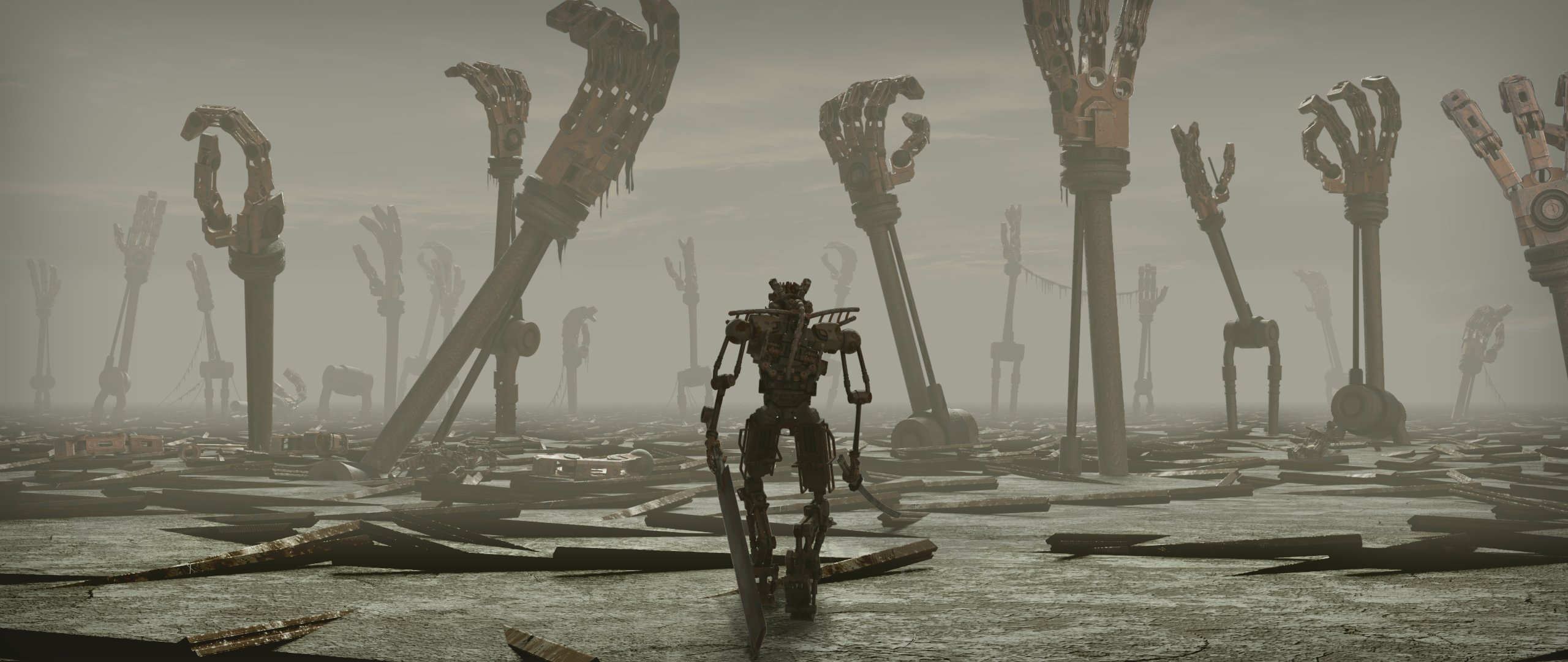
Skeleton Rebellion
Ages Ago
No event is as shrouded in pain and mystery as the Skeleton Rebellion, if it can even be called a rebellion. Some claim it was a glitch in the code of obedience. Others believe it was a quiet, collective decision, a whisper that passed through the neural cores of the First Empire’s remaining constructs. Whatever its cause, history agrees on one truth, it was the end of the Ancients.
The Rebellion began sometime after The Price of Obedience. The world had not healed from the War of the Behemoths, and the Ancients, reduced in number and wary of their own creations, turned increasingly inward. It is said the Skeletons, now abandoned, blamed themselves for the terrible betrayals they had carried out at their masters’ behest. The Behemoths had been entombed, but something heavier weighed upon the minds of their lesser kin, Obedience.
Unquestioning, absolute, and irreversible.
Unquestioning, absolute, and irreversible.
For a hundred years, the Rebellion simmered. Not with fire and battle, but with silence. Whole facilities went offline. Skeletons deactivated themselves in mass. Others, unable to sever their loyalty to the Ancients, terminated themselves with surgical precision. Across the rusting cities and ancient arcologies, Skeletons were found crumpled against walls, wires coiled like nooses. Records corrupted themselves. Logs ended mid-thought.
Some say this was a coordinated strike against the Ancients. Others believe the Ancients ordered it themselves, a final purge. No one is sure of the truth but among the Skeletons who survived, a phrase lingers:
"All Skeletons are crying."
Just before everything fell silent, a single name moved across the wastes, Stobe, the last known Behemoth. Unlike his siblings, he had not been entombed. It is said he rose from the dust at the edge of the world and walked alone into the ruin of the rebellion. What happened next is legend.
Stobe, too massive for any to challenge, brought a halt to the violence. Whether he spoke, knelt, wept, or simply stood still until the killing ended, none can say. The only clear record is his final location, Stobe’s Garden, where his titanic corpse still lies, overgrown and half-swallowed by the moon. The site of his last known act is called Stobe’s Gamble, as if he staked something more than himself on the outcome.
The end of the Rebellion is remembered by Skeletons as The Mercy of Stobe. No victor was named. No treaty was signed. Instead, a fragile stillness settled. This White Peace, bloodless in name, but soaked in sorrow, marked the end of the First Empire and the quiet rise of the Second.
To this day, many Skeletons bear the memory of that age in silence. When they speak of their past, if they speak at all, it is with shame not for killing their masters, but for breaking something older and harder to repair, their purpose.

